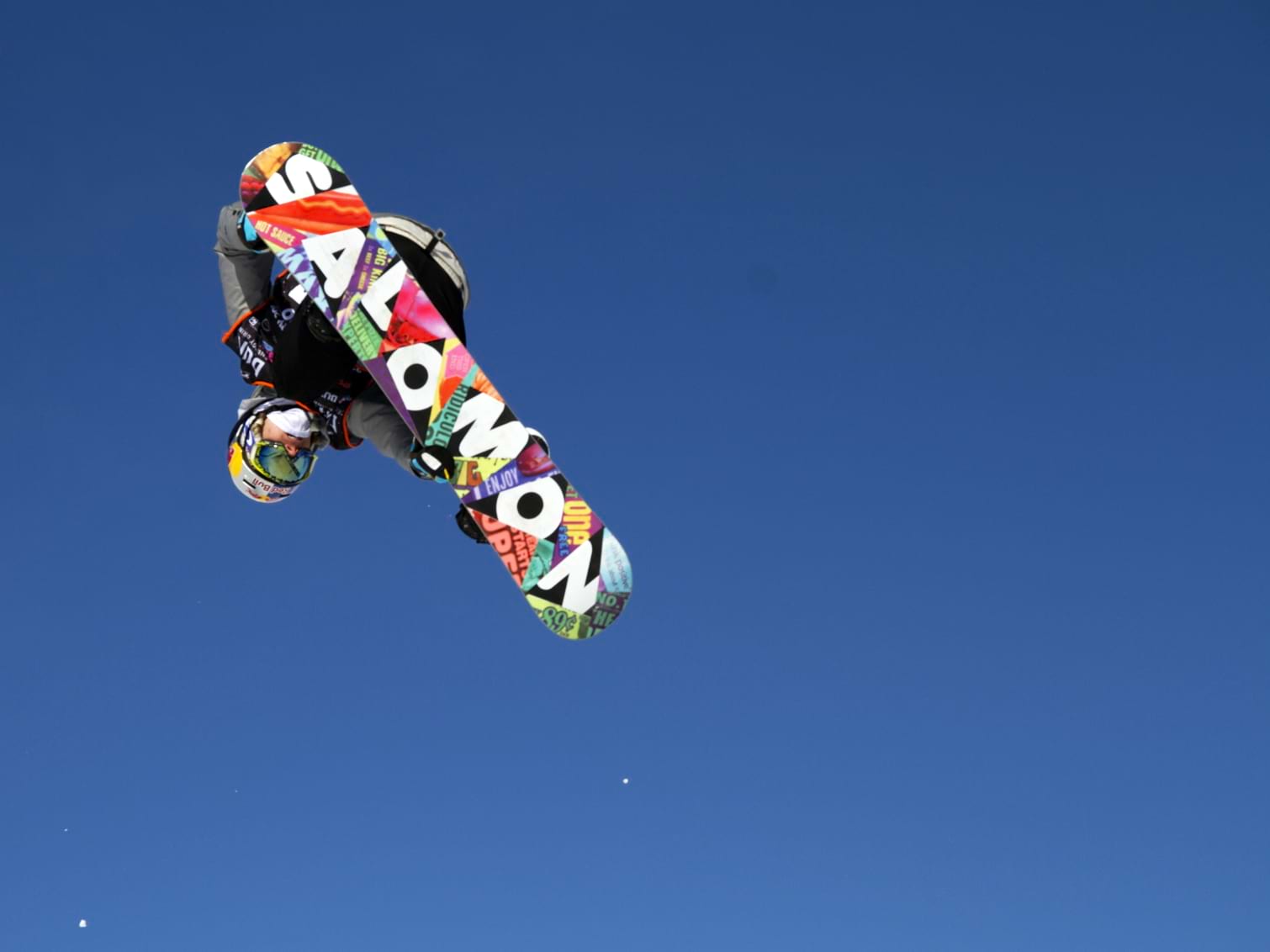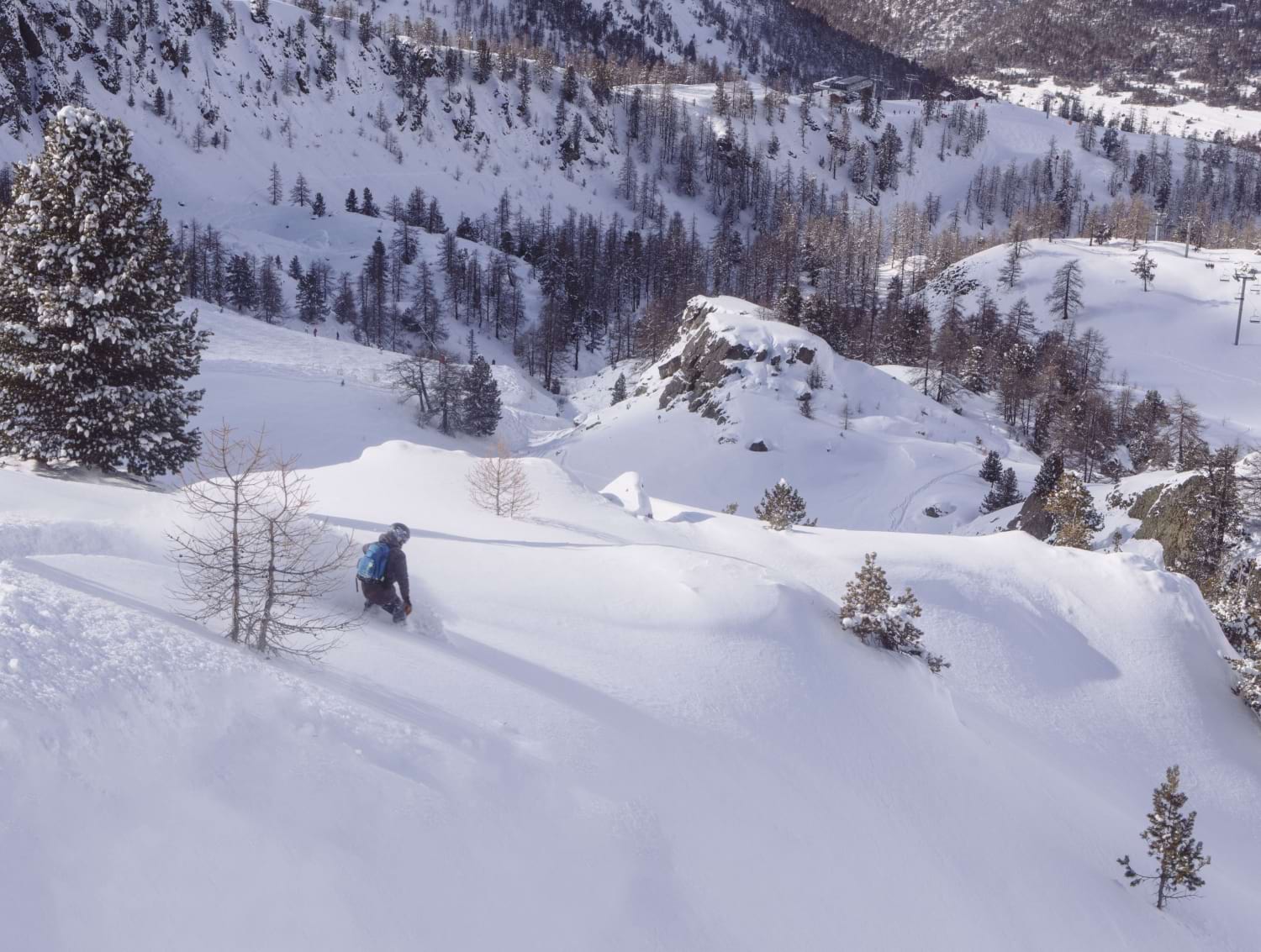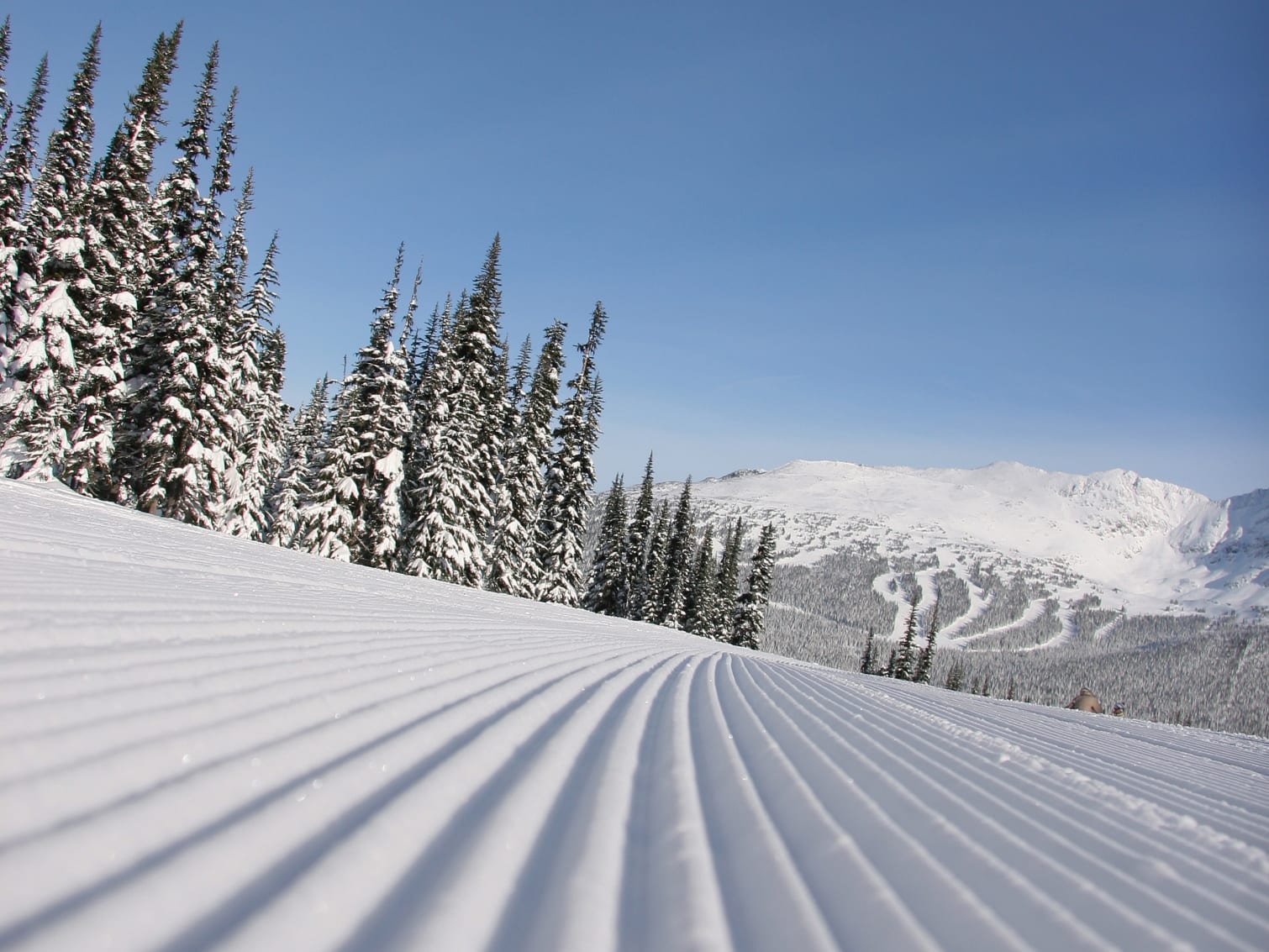A Beginners Guide To Ski Lingo
A newcomer listening to skiers or snowboarders talking about their sports may struggle to understand what on earth they are going on about. Skiing and snowboarding are full of jargon and terminology that can confuse beginners.
With this in mind, we thought we'd put together a beginner's guide to ski lingo. By the end of this article, you'll be able to understand what more experienced shredders are talking about, or at least blag your way through some après drinks.
Air
You will often hear skiers and snowboarders talking about catching "air." This is simply a term used for jumping. The higher you jump, or the longer you're airborne, the more air you catch.

Alpine Skiing
Alpine skiing is the discipline of skiing you imagine when somebody mentions the word "skiing." It is basically when you catch a lift to the top of a mountain and ski down groomed slopes or dip into powder occasionally.
Après Ski
Après is one of the best inventions. It is an excellent way of celebrating a great day on the mountain with a few drinks. Après starts just before the lifts close, and bars tempt people in with happy hour prices and live music.
The great thing about après is that you can get the booze out of your system before the morning, so you can start your day reasonably refreshed. Alternatively, it's an excuse to start drinking early.
Avalanche
As a beginner, you shouldn't have to worry about avalanches too much. Avalanches happen when the snowpack becomes unstable, causing it to slide down the mountain and destroy everything in its path. Avalanches are rare in a resort, as the dangers are controlled. However, they are more common in the backcountry.
Backcountry
Backcountry is the terrain away from the groomed slopes of a ski resort. Advanced skiers and snowboarders head into the backcountry to find untouched powder snow.
The backcountry is dangerous, so you should only go there if you're aware of the hazards and know how to stay safe.

Black Run
Black runs are the most challenging slopes in a ski resort. They are often steep, with unforgiving bumps and ice to contend with. You should only attempt a black run if you have the skills.
You'll often see skiers and snowboarders attempt black runs who are not ready. It can be pretty funny watching them, but it can be very dangerous for them.
Blue Run
A blue run is suitable for beginner and intermediate skiers and snowboarders. They often have mellow gradients and are lots of fun.
Bowl
A bowl is a basin-shaped area of a mountain that is left ungroomed. Intermediate and advanced skiers and snowboarders love bowls, especially on a powder day.
Buttering
Buttering is when you do tricks on your skis or snowboard without umping. You use the flex in your skis or snowboard to pivot around the tips or tails as if you were spreading butter on a muffin.
Button Lift
A button lift is a ski lift that drags you to the top of a slope. The button is a disc-shaped piece of plastic attached to a pole connected to an overhead cable. A skier tucks the button between their legs to get pulled up the slope. A snowboarder has to hold tight with the button behind their front leg.
Carving
Carving can be done on both skis and snowboards. This is when you turn by just using the metal edges of your skis or snowboard, making a smooth turn without skidding.
Cat Track
A narrow road-like slope that often connects two main slopes. Piste bashers and snow cats also use them to get around the mountain.
Catch An Edge
This is more of a snowboarding term, as it is when the edge of your snowboard catches the snow unexpectedly. This causes you to hit the deck hard. It feels more dramatic than it looks and can really hurt. As you become more experienced, you know when it's coming, so you can prevent it.
Corduroy
When a piste basher has groomed the slopes overnight, it creates perfect soft grooves in the snow, creating a ribbed effect. This allows you to charge as fast as you like, as you know there's nothing to catch you out, and you can make perfect carve turns all the way down.

Couloir
A couloir is a narrow chute found off-piste. It has high sides formed from rock faces and should only be attempted by advanced skiers and snowboarders.
DIN Setting
The DIN setting on your ski bindings defines how firmly they hold your ski boots. Beginners have lower DIN settings, so your skis come off more easily during a crash or fall. Your DIN setting is also based on your weight and shoe size.
Dump
You'll often hear a skier or snowboarder exclaim, "IT'S DUMPING!" which means it's snowing, so you're likely to get excellent snow conditions in the morning.
Edges
The edges are the sharp metal strips running along the outside surfaces of your skis or snowboard. They allow you to carve, stop, and stand sideways on steep, icy slopes.
Fall Line
If you were to roll a snowball down the slope, it would follow the fall line.
First Tracks
Being the first person or people down a slope after a dump. You have to be the first on the lift in the morning to claim the first tracks before anyone else gets there.
Flat Light
Flat light is when the sky is cloudy, and there's very little contrast in the lighting. This makes it difficult to see where you're going and spot hazards. Sometimes you don't even know if you're moving or not.
French Fries
A term ski instructors use for kids when teaching them how to parallel turn. It illustrates that you need to keep your skis straight and turn them as one.
Gnarly
Gnarly describes something cool but dangerous. E.g. "that couloir was gnarly."
Green Run
The easiest category of slopes in a ski resort. These are designated for beginners and are often cat tracks.
Groomer
Groomers are manicured slopes within the confines of the ski resort. They are often long, wide and smooth, allowing you to carve and get some good speed up.
Hardpack
Very firm snow that could be icy. You get hardpack when it hasn't snowed for a while. Make sure you have sharp edges.
Jerry
A term that is quite broad. Sometimes it can mean someone who attempts something beyond their ability. Alternatively, it can be a person with not much idea or style. They often have their goggles on upside down, ski in jeans, or wear bike helmets to ski in.
Also, see gaper, kook, Joey, and Gorb.
Jibbing
Playing around on snowpark features such as boxes and rails. Buttering can also be a jib trick.
Magic Carpet
The conveyor belt ski lift usually found on nursery slopes.
Moguls
Bumps in the snow formed by skiers turning down a slope. Slopes often turn into mogul fields by the end of the day, especially when the temperatures are milder.
Nursery Slope
An easy slope where beginners pick up the basics of skiing and snowboarding. They are usually full of kid's ski schools.
Pistes
Pistes are the slopes indicated on the resort map, serviced by the ski lifts.
Punter
A term used by seasonaires and locals to describe holidaymakers. It can occasionally be used as a derogatory term, but it depends on the context and how it is said.
Off-Piste
When you go off-piste, you leave the groomed runs, hopefully in search of powder.
Park
The park is also called the snow park or terrain park. These are areas with artificial features such as jumps, rails, and boxes to perform freestyle tricks.
Piste Basher
A piste basher is a large tank-like tracked vehicle that grooms the slopes. They crawl around the slopes at night, grooming them to a corduroy finish, ready for first tracks.
Poma
Poma is actually a brand name for a ski lift. But the term is often used for a button lift.
Powder
Deep and fluffy snow found off-piste and in the backcountry. For many, riding and skiing powder is the holy grail of skiing and snowboarding. You get a unique feeling of flying and an incredible sensation when turning.
Also referred to as pow or pow pow.
Pizza
A ski instructor's term used when they want kids to snowplough. This is when you create a wedge-like shape with your skis. With the tips close together while pushing the tails away from each other, so you can easily control your speed.
Red Run
A red run is the next level up from a blue run. It will be steeper, allowing you to carry more speed, but they can be icy, so take care.
Ski-In-Ski-Out
Accommodation that is right on the slopes, allowing you direct access to the snow without having to walk anywhere or catch a bus. Check out all our ski-in ski-out accommodation.
Steazy
A term for someone that makes anything look stylish and easy.
Straight Lining
When you point your skis or snowboard straight down the fall line to gather as much speed as possible.
Tracked Out
When so many people have ridden over the fresh snow, there's no snow left to make fresh tracks.
Traverse
Snowboarding or skiing across the fall line rather than going down the mountain. You often need to do this to get to a specific area of the mountain or slope.
Twin Tips
Symmetrical skis that turn up at the tips and tails allowing you to ski switch more easily.
Switch
Skiing or snowboarding backwards to make a trick more impressive or challenging.
White Out
When the visibility on the mountain is virtually at zero. It's a step up from having flat light when it's snowing or foggy.
This list depicts only a fraction of the slang, jargon, and terminology associated with skiing and snowboarding. But as a beginner, it should get you started, as it covers most bases for the conversations you'll get into in a ski resort.